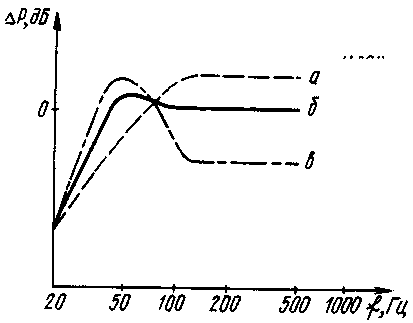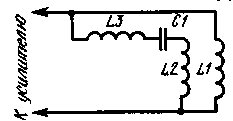The current flowing through the moving in the magnetic field of the voice coil, at constant amplitude of the voltage at its conclusions is inversely proportional to its full electrical resistance and back EMF arising in the voice coil as it moves in the gap. The inductive component of the impedance of the voice coil and back EMF are frequency dependent, so the current flowing through the coil, and hence the impact head of direct radiation depend on the frequency of the audio signal.
When playing frequency. coinciding with the main resonance frequency of the moving system of the head, there is a sharp decrease its impact. This is due to the increase in the back EMF of the voice coil as a result of increasing the speed of its moving in a magnetic field (the effect of active and inductive resistance of the voice coil in this case can be ignored).
To increase the impact on the resonant frequency by increasing the inductance in the gap or length of the conductor is not possible because the dependence of the impact parameter B1 is different at different frequencies.
In Fig. 1 shows a frequency characteristic of sound pressure head at frequencies up to 500 Hz. On the ordinate is the change in the impact of the head compared to the nominal (curve b).

Fig.1
Curve a (compared with curve b) represents the frequency response sound pressure head, which has increased the value of B1, and curve - low (with DC resistance of the voice coil). The figure shows that in the frequency range from 70 Hz to 500 Hz, the impact head is directly proportional to the product of B1. But near the resonant frequency, the picture changes dramatically. The increase B1 reduces the impact on the lower frequencies, while lower values B1 returns increases. This occurs as a result of the action of the said back EMF, which ceteris paribus is directly proportional to the parameter B1.
To improve the impact of the head on the resonant frequency, if at this frequency through the coil will flow more current. A way to implement it, based on the use of additional voice coils L2 (Fig. 2).

Fig.2
The second voice coil is wound from above or below the main one. It connects via a serial LC circuit (L3С1), the resonant frequency of which is selected to be the primary resonance frequency of the moving system of the head. Due to the small resistance of the LC circuit at the primary resonance frequency of the additional coil is connected in parallel to the main. The force F that provides the acceleration of mobility of the system head will be determined by the total current flowing through both coils. Thus, the output of the loudspeaker at the resonant frequency will increase.
At frequencies that differ by not less than one octave from resonance, the impedance of the circuit L3C1 fairly large, which excludes the impact of additional coils on the head.
Literature
Publication: N. Bolshakov, rf.atnn.ru






